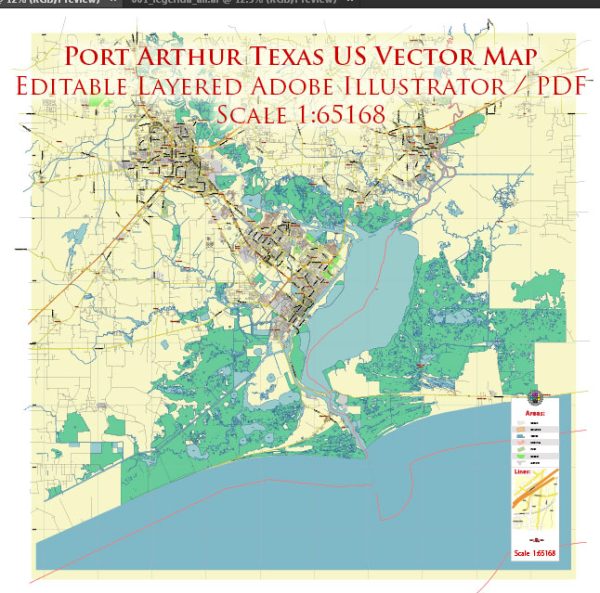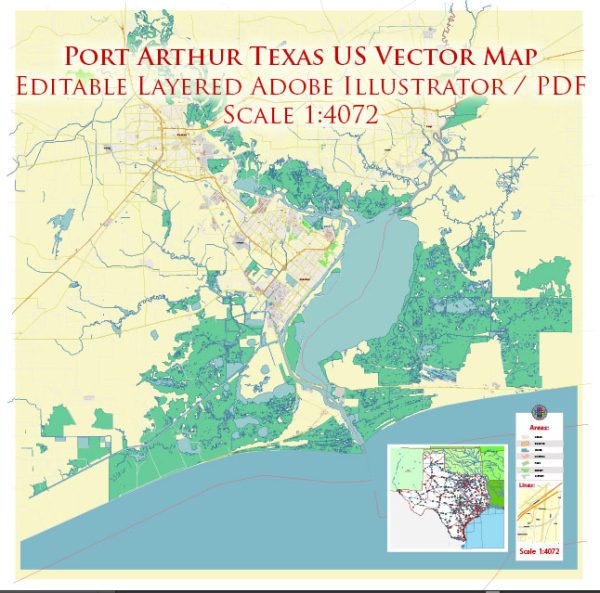Port Arthur, Texas, has a rich history of urban development that is closely tied to its role as a major port and industrial hub. Here is a brief overview of the historical urban development of Port Arthur:
- Early Settlement and Growth (19th Century):
- Port Arthur’s history dates back to the late 19th century when it was initially settled as a railroad town. The Southern Pacific Railroad played a significant role in the early development of the area.
- The town’s strategic location along the Gulf of Mexico and its proximity to the Louisiana border contributed to its growth as a transportation and trade hub.
- Oil Discovery and Industrialization (Early 20th Century):
- The discovery of oil at Spindletop in nearby Beaumont in 1901 had a profound impact on the region, leading to an economic boom. Port Arthur became a crucial center for the oil industry and petrochemical processing.
- The establishment of the Gulf Oil Corporation refinery in 1901 and later refineries by other major oil companies solidified Port Arthur’s status as an industrial powerhouse.
- Hurricanes and Rebuilding (20th Century):
- Port Arthur faced the destructive force of hurricanes, with notable events like the 1915 hurricane and Hurricane Rita in 2005. These natural disasters posed challenges to the city’s infrastructure, leading to periods of rebuilding and redevelopment.
- Population Growth and Diversification (Mid to Late 20th Century):
- The mid-20th century saw a significant increase in population and economic activity in Port Arthur due to the continued expansion of the petrochemical industry. The city attracted a diverse workforce seeking employment in the industrial sector.
- While the oil and petrochemical industries remained central to the city’s economy, efforts were made to diversify and promote other sectors.
- Challenges and Decline (Late 20th Century to Early 21st Century):
- Like many industrial cities, Port Arthur faced challenges such as economic downturns, environmental concerns, and shifts in the energy industry. These factors contributed to a decline in certain aspects of the city’s urban development.
- Efforts to revitalize the downtown area and promote tourism were initiated to counteract economic decline.
- Modern Redevelopment Efforts (21st Century):
- In recent years, there have been concerted efforts to revitalize and redevelop various parts of Port Arthur. This includes initiatives to improve infrastructure, enhance waterfront areas, and attract new businesses.
- The city has sought to balance its industrial heritage with sustainable development and environmental considerations.
- Cultural and Recreational Assets:
- Port Arthur boasts cultural and recreational assets, such as the Museum of the Gulf Coast, which celebrates the region’s history, and Pleasure Island, a recreational area along the Sabine Lake.
The urban development of Port Arthur reflects the intertwined history of industry, transportation, and natural forces shaping the city over the years. The ongoing efforts to diversify the economy and promote sustainable development are indicative of the city’s resilience and adaptability.



 Author: Kirill Shrayber, Ph.D.
Author: Kirill Shrayber, Ph.D.